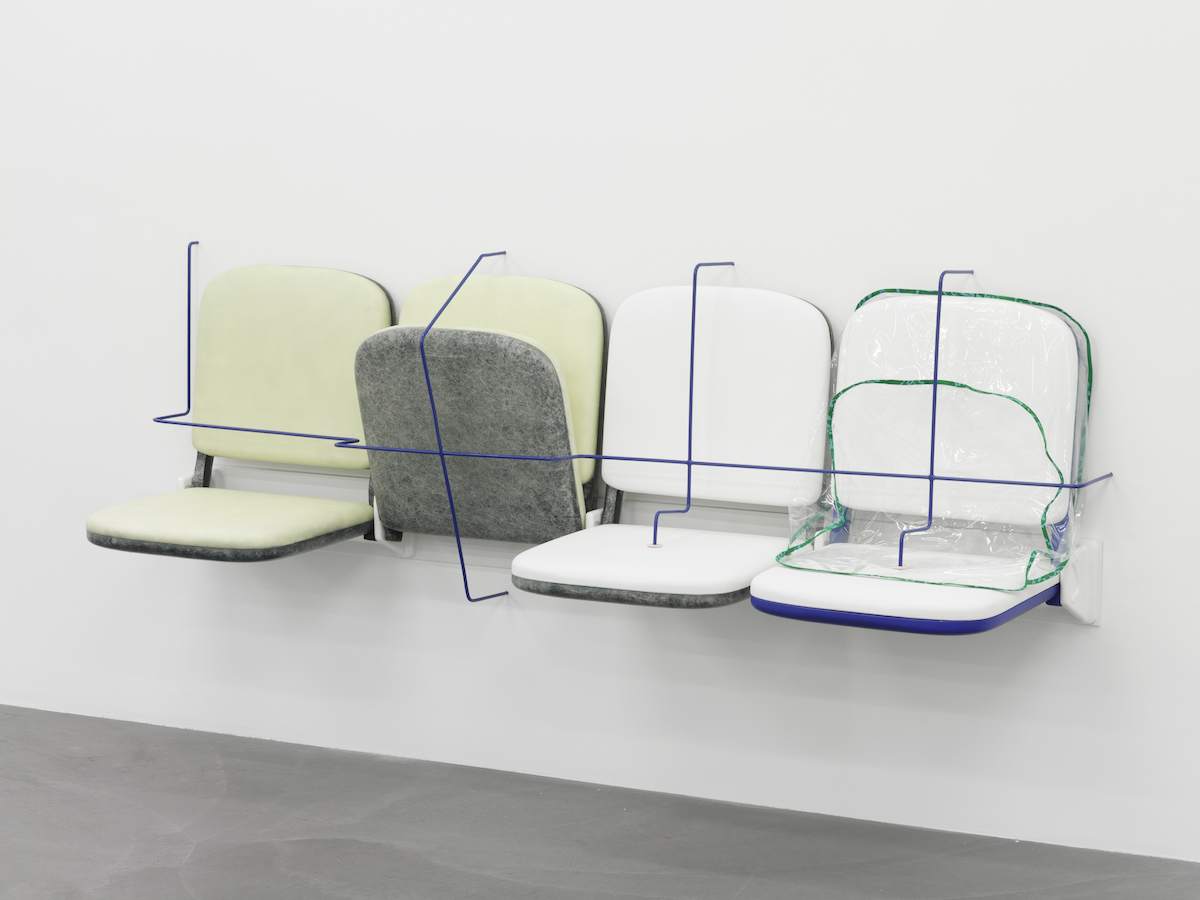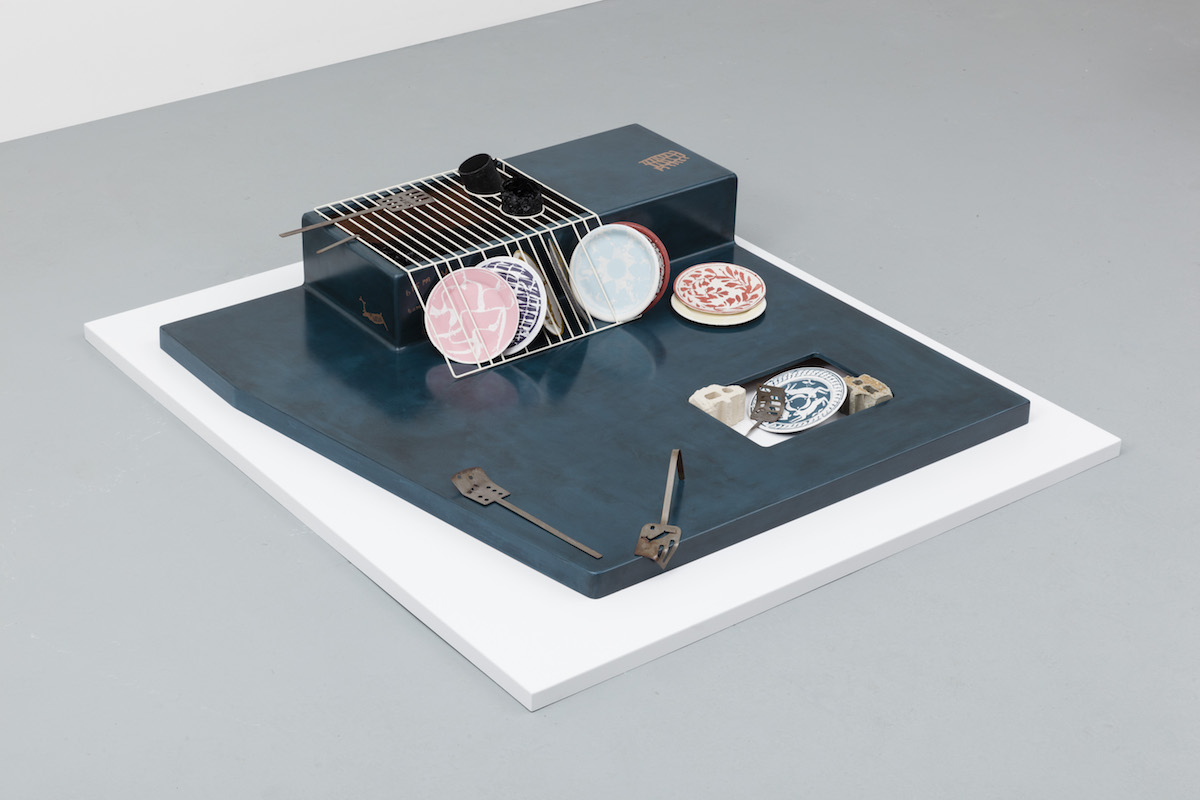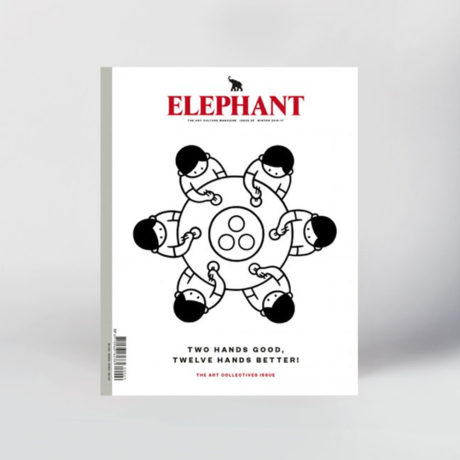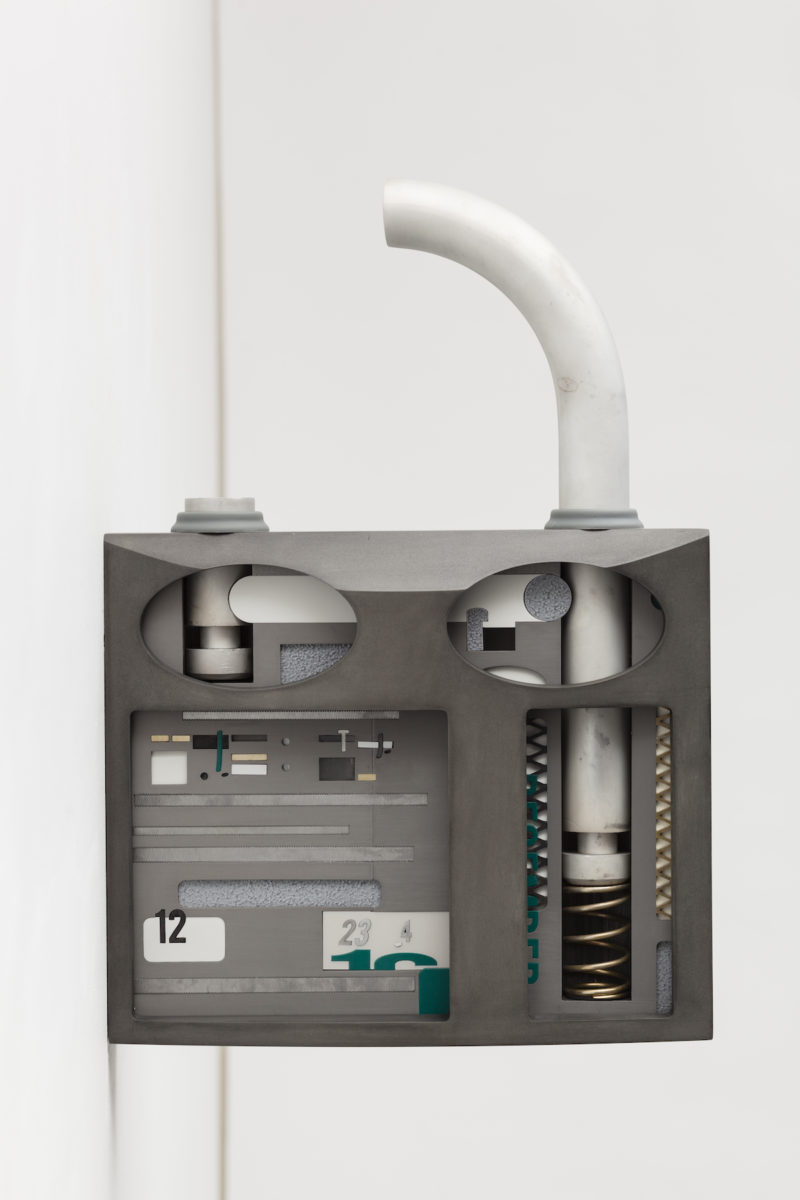
Educated at Goldsmiths College and then Amsterdam’s Rijksakademie, Reus now lives and works in London’s East End. With exhibitions in 2016 at prestigious venues including Turin’s Fondazione Sandretto Re Rebaudengo and Amsterdam’s Stedelijk Museum, institutions internationally are now taking note of this young sculptor.
Walking around your exhibition Quarters at the Fondazione Sandretto Re Rebaudengo, it struck me that ideas of archaeology and layering are used in the works.
Both the floor-based and wall-based works are composed through a process of layering: metaphorically the works undergo a series of narrative accumulation, whereas formally the basic infrastructure of each piece starts with a series of material laminations. The casting process in some way mirrors the imagistic construction of each work, as the individual layers are brushed in, meshed into one another, and then sanded and reinforced with further secondary layers. This sedimentary process is always partially exposed and the handling of material in its most elemental sense is visible.
“I am compelled by the way the human desire for cleanliness and the processes by which we preserve ourselves (and our food) often prove futile in the face of pervasive microbial interaction.”
In the series In Place Of, the exposure of various strata results in a confusion of surface-versus-object hierarchies and the numerous material qualities within the works stand in friction with one another: the warmth of pliable soft fabric beside hard metallic edges, for instance, would not usually permit a collapse of binaries, but when images fail to align with their expected material qualities, all is disrupted. Within the works, toast might appear calcified or transparent; coat hangers suggest volume but exist as radically flattened graphic cut-outs; and polystyrene affects all the squashy crumbliness of the real thing, but is eerily fixed as an impossibly hard and weighty block. The legibility of these details undergoes a process of delay; image meaning snags in light of object meaning. Like archaeology, every component is made visible by way of methodological excavation: from the most literal sense of existing at ground level, to the idea of wanting to reclassify every inch of material detail, these works engage their viewer in the operational task of looking.

The problematics of scale are also at work. I am interested in how people photograph objects in archaeological sites: these images always contain a marker of known size highlighting the dimensions and quality of the objects or fragments unearthed. This idea of discovery via the mechanics of data and a numbering system is of course immediately analogous with activities of archaeology. With the Leaves, a similar form of layering is initiated because of the relationship between the external casings of the work and their flaunted internal mechanisms. There is a clash between the baroque grace of physically exposed detailing and the rigorous narrative formalism of implementing a calendar logic (months of the year) and labour-implying first name onto the titles of each work. En masse, these pieces inevitably set out microscopic sites of individual investigation.
- Leaves (Ivy Tranche, December), 2015
- Leaves (Kent Stripes, June), 2015
How are the Leaves works constructed?
These works undergo an absurd quantity of technological dissection, beginning at the most analogue end of hand-drawing and escalating to various computer-aided milling techniques. Pencil-drawn vector lines are repurposed into 3D computer models, and each single work comprises hundreds of tiny laser-cut, milled, engraved, etc. pieces which travel out to their allocated finishers and then come back to be put together like a jigsaw puzzle. It’s a dizzying web of process, but one that is grounded by methodical part-by-part hand-assembly.

Sometimes the body doesn’t feel immediately present in your work because it is so rooted in objects—but these are objects you might encounter in an everyday environment. What about your large-scale works reminiscent of refrigerators: the Lukes series?
Of course the immediate visual legibility of the Lukes series is not one of classic figuration, but as approximate stand-ins for a body, they might be thought of as crudely drawn silhouettes of a family typology: small, medium, large, extra-large. More corrupting is the idea that, as fully functioning devices, fridges are permanently wired into our electrical networks: they hum, rattle and groan. There is a heartbeat and therefore some kind of analogical pulse. The language of it all is perversely muddled: to obtain deeply freezing cold, the input must be searingly hot and alive with energy.

In your 2014 exhibition at The Approach, In Lukes and Dregs, there was a sense of liquidity, glossy surfaces, shrinkwrap and sterility. What was your approach to the material reality of that show?
Through their architecturally abstracted forms these works offer individual denotations of the everyday. As one of the more basic motifs of what you mention, the exhibition included a number of dumbly congealed puddles. I am compelled by the way the human desire for cleanliness and the processes by which we preserve ourselves (and our food) often prove futile in the face of pervasive microbial interaction. We are constantly enacting our own private comedies of edification. So that sense of tragicomedy inevitably plays into these works: they are stubborn and full of vanity in their blank persistence just to be. And, more literally, these works also referenced things that I had encountered in the street. A translucent purple material in which bits of shredded purple plastic were encapsulated paid homage to a beautiful yellow kebab box I saw after heavy rain had fallen overnight: small flecks of remnant cabbage had been soaked by the rain and, sodden as it was, the material had leached all its colouring into the surrounding water, transforming the whole box into a glittering purple pool.
“Beautiful moments happen every day when the world exposes itself as an enormous overlapping Venn diagram of symbols and connotations.”

Do you feel it could be said of your practice broadly that you’re interested in trying to capture these magical moments in the everyday and reproduce them in a way that makes them remarkable?
Perhaps in the sense that I’m interested in repurposing the systems and resultant meanings we set upon ourselves. I’m interested just as much in material translation as I am in the potential minutiae of information and strategy a certain look might convey. Beautiful moments happen every day when the world exposes itself as an enormous overlapping Venn diagram of symbols and connotations. To be able to work through these moments and rearrange links of meaning within what is an already saturated visual planet is quite a luxurious position to be in.








